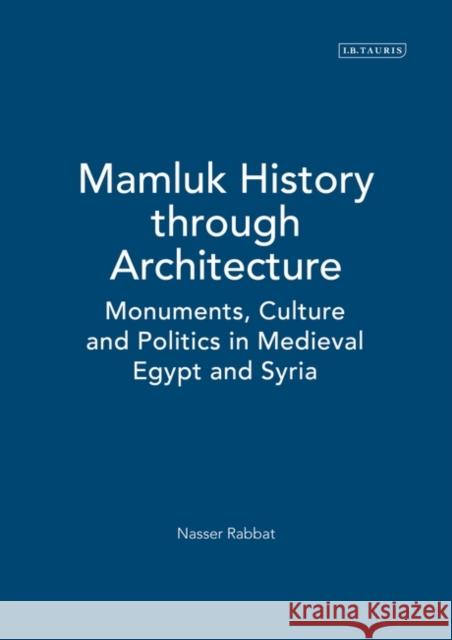Mamluk History Through Architecture: Monuments, Culture and Politics in Medieval Egypt and Syria » książka
Mamluk History Through Architecture: Monuments, Culture and Politics in Medieval Egypt and Syria
ISBN-13: 9781845119645 / Angielski / Twarda / 2010 / 288 str.
Mamluk History Through Architecture: Monuments, Culture and Politics in Medieval Egypt and Syria
ISBN-13: 9781845119645 / Angielski / Twarda / 2010 / 288 str.
(netto: 601,45 VAT: 5%)
Najniższa cena z 30 dni: 627,63
ok. 30 dni roboczych
Dostawa w 2026 r.
Darmowa dostawa!
The most enduring testament to the Mamluk Sultanate is its architecture. Not only do Mamluk buildings embody one of the most outstanding medieval architectural traditions, Mamluk architecture is actually a key to the social history of the period. Analyzing Mamluk constructions as a form of communication and documentation as well as a cultural index, Mamluk History Through Architecture shows how the buildings mirror the complex -- and historically unique -- military, political, social and financial structures of Mamluk society. With this original and authoritative study Nasser Rabbat offers an innovative approach to the history of the Mamluks -- through readings of the spectacular architecture of the period. Drawing on examples from throughout both Egypt and Syria, from the Citadel and Al-Azhar Mosque of Cairo to the Mausoleum of al-Zahir Baybars in Damascus, Rabbat demonstrates how Mamluk architecture served to reinforce visually the spirit of the counter-Crusade, when the Muslim world rebounded from the setbacks of the First Crusade. Both holistically and in case studies, Rabbat demonstrates how history is inscribed into and reflected by a culture's artifacts. This is a groundbreaking work in the study of architecture and social history in the Middle East and beyond.











